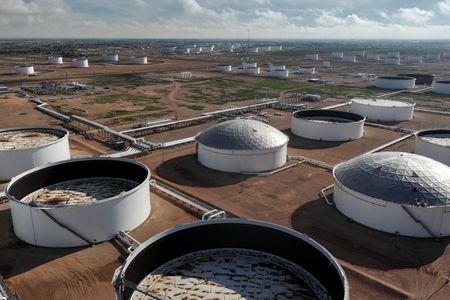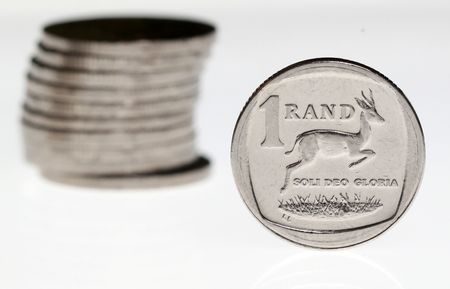By Scott DiSavino
NEW YORK (Reuters) -Oil prices edged up to a two-week high on Tuesday on forecasts for less U.S. oil production, renewed Houthi attacks on shipping in the Red Sea, worries about U.S. tariffs on copper and technical short covering.
Brent crude futures rose 57 cents, or 0.8%, to settle at $70.15 a barrel, while U.S. West Texas Intermediate (WTI) crude closed at $68.33, up 40 cents, or 0.6%.
Those were the highest closes for both crude benchmarks since June 23 for a second day in a row.
“The lower (U.S.) production outlook got the price rally going and it kept going along with other commodities on the copper tariff news and the increased tensions in the Red Sea,” said Phil Flynn, an analyst at Price Futures Group.
The U.S. will produce less oil in 2025 than previously expected as declining oil prices have prompted producers to slow activity this year, according to the latest Energy Information Administration (EIA) outlook.
U.S. President Donald Trump said on Tuesday he will announce a 50% tariff on copper later in the day, aiming to boost U.S. production of a metal critical to electric vehicles, military hardware, the power grid and many consumer goods.
Trump’s decision to impose copper tariffs surprised markets and boosted prices of the metal to a record high.
In the Red Sea, three seafarers on the Liberian-flagged, Greek-operated bulk carrier Eternity C were killed in a drone and speedboat attack off Yemen, the second incident in a day after months of calm.
Attacks in the Red Sea have forced vessels carrying oil, liquefied natural gas and other energy products to travel long distances to avoid the region, boosting energy costs.
Some analysts also noted the oil market was supported by technical short-covering after Brent prices traded over $70 a barrel, a key level of both psychological and technical resistance.
In addition, energy traders noted rising prices for U.S. gasoline and diesel in recent weeks have boosted the diesel crack spread to its highest since March 2024 and the 3:2:1- crack spread to a six-week high. Crack spreads measure refining profit margins.
“The best thing that this complex has going for it on the upside is its recent ability to advance despite a steady flow of seemingly bearish headlines that would usually be weighing on oil values,” analysts at energy advisory firm Ritterbusch and Associates said in a note.
Those bearish headlines include Trump’s plan to ramp up his trade war again and plans by the Organization of the Petroleum Exporting Countries and allies, a group known as OPEC+, to raise production by 548,000 barrels per day (bpd) in August.
US OIL INVENTORIES
Analysts forecast U.S. crude stockpiles fell about 2.1 million barrels last week. The American Petroleum Institute (API) trade group and the EIA are due to release weekly U.S. inventory data on Tuesday and Wednesday, respectively. [EIA/S] [API/S]
If correct, that would be the sixth time energy firms pulled oil out of storage in seven weeks. That compares with a decrease of 3.4 million barrels during the same week last year and an average increase of 1.9 million barrels over the past five years (2020-2024).
(Reporting by Scott DiSavino and Stephanie Kelly in New York, Seher Dareen and Paul Carsten in London, and Jeslyn Lerh in Singapore; Editing by Marguerita Choy and Joe Bavier)










